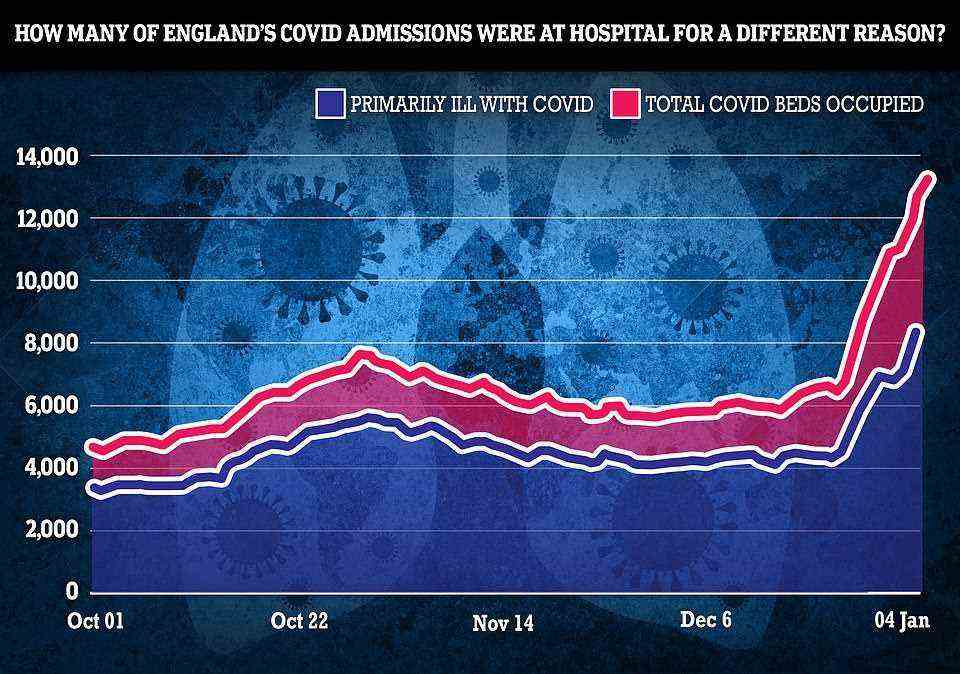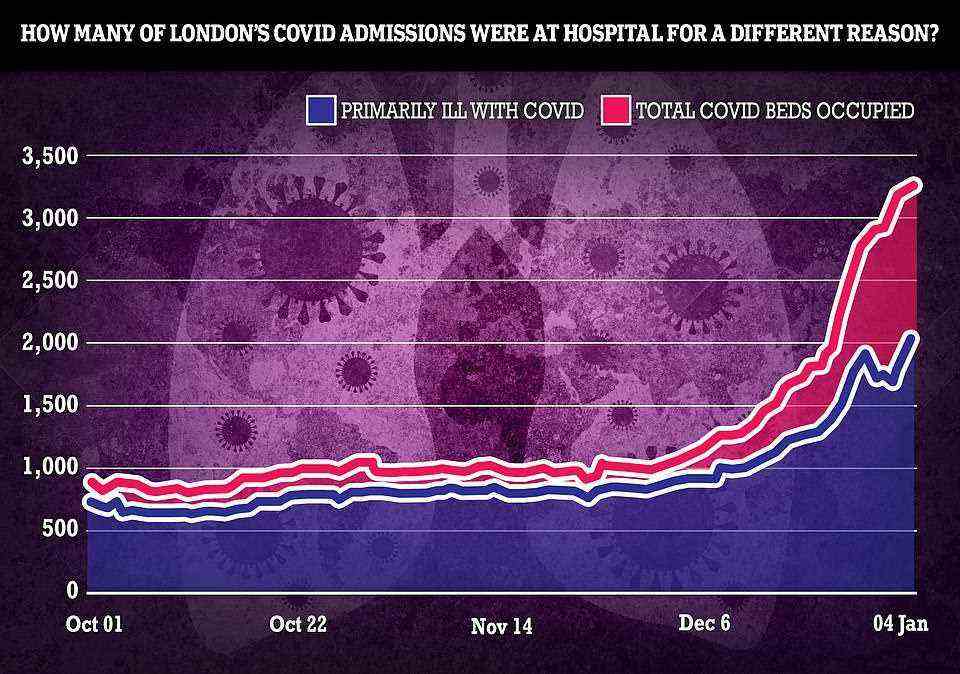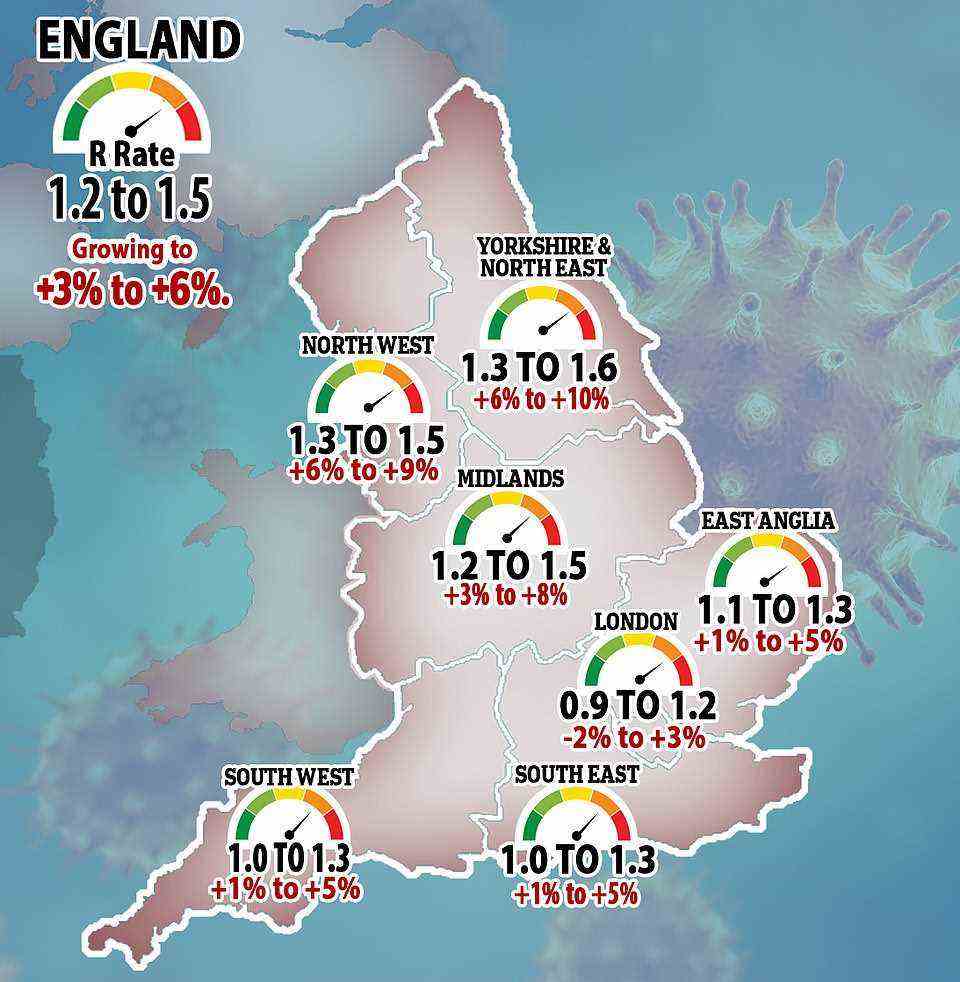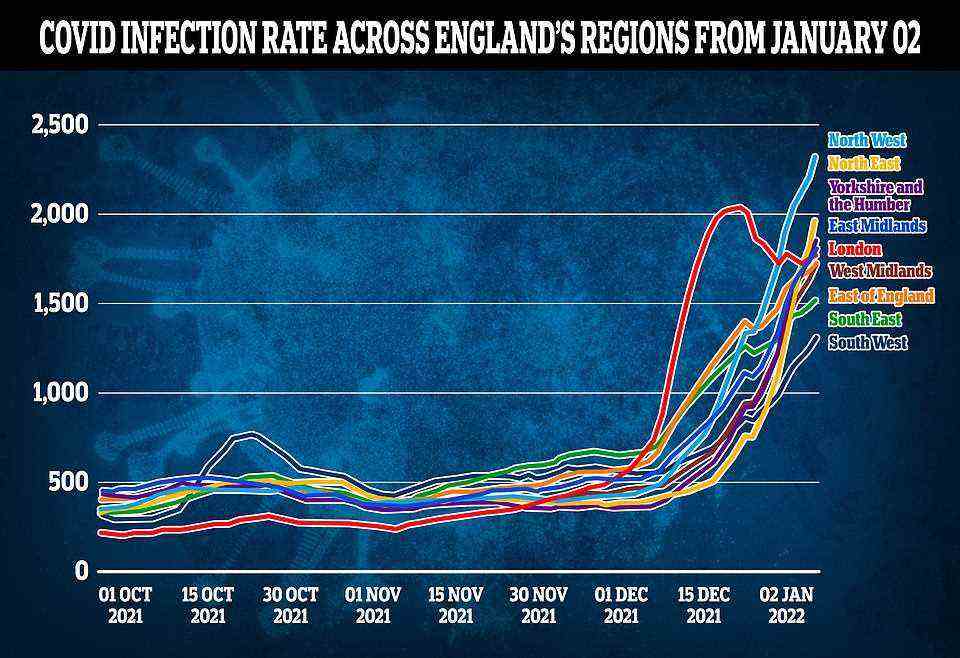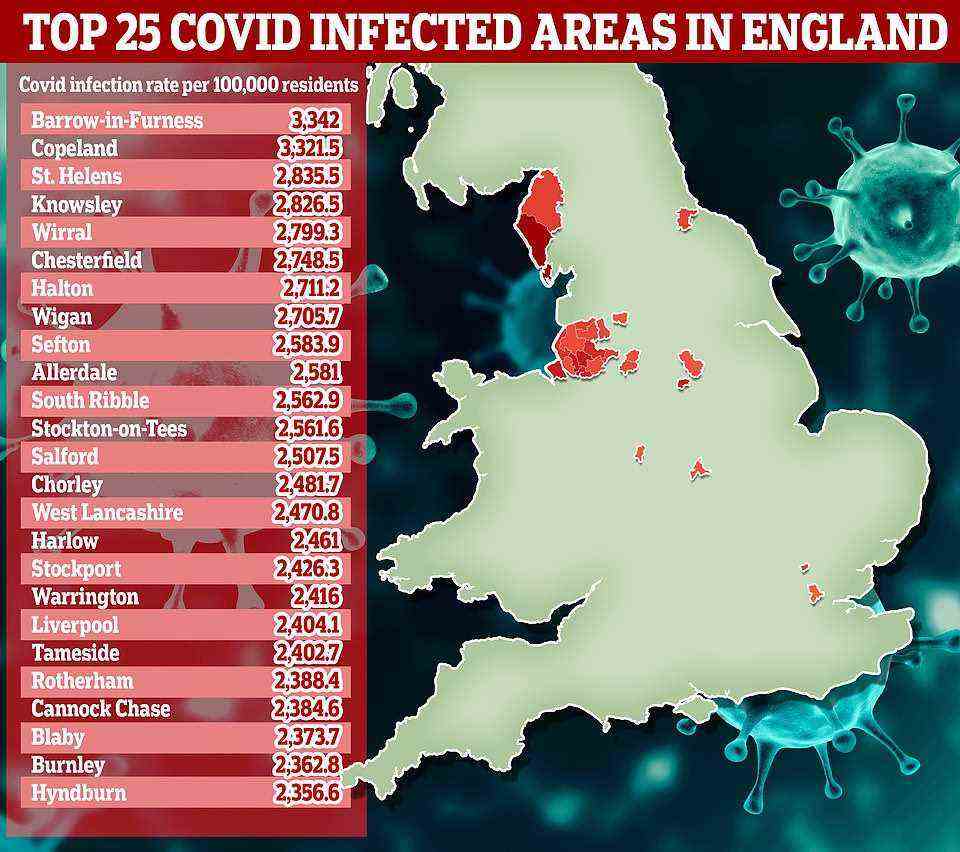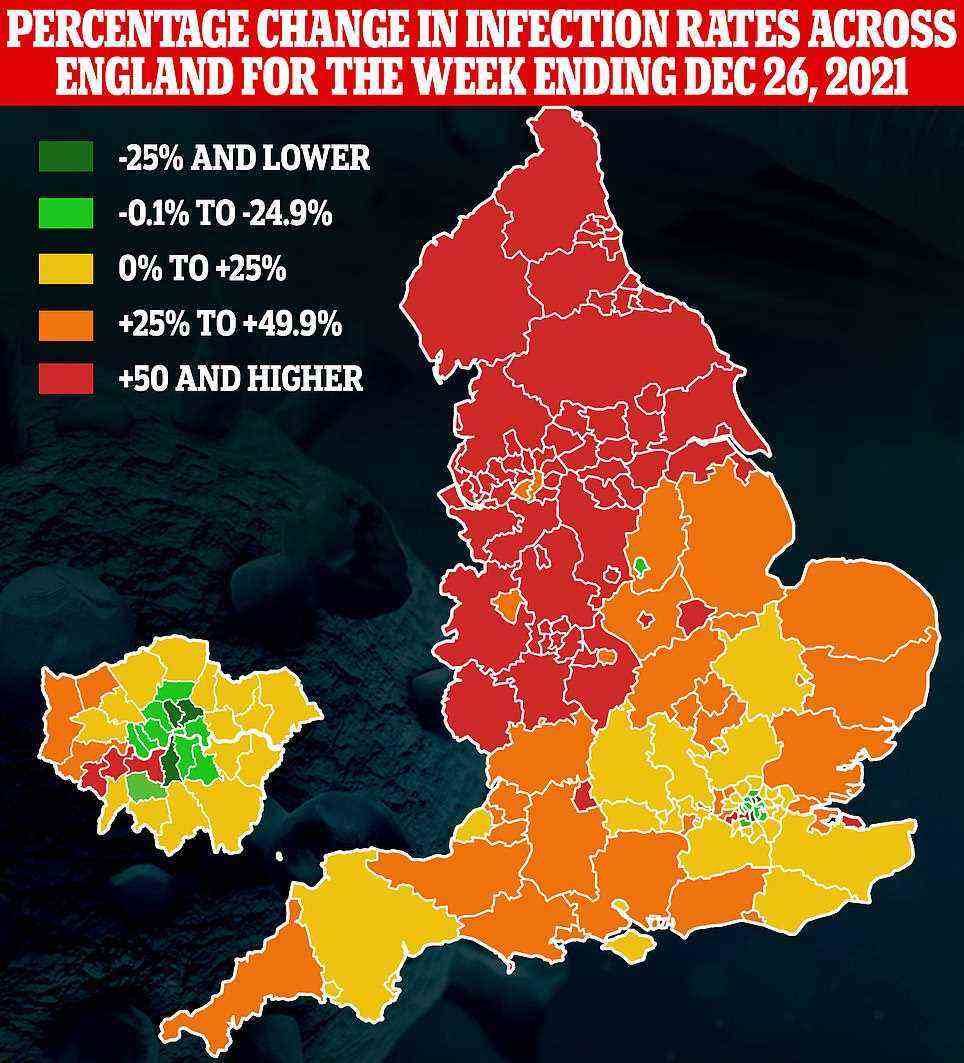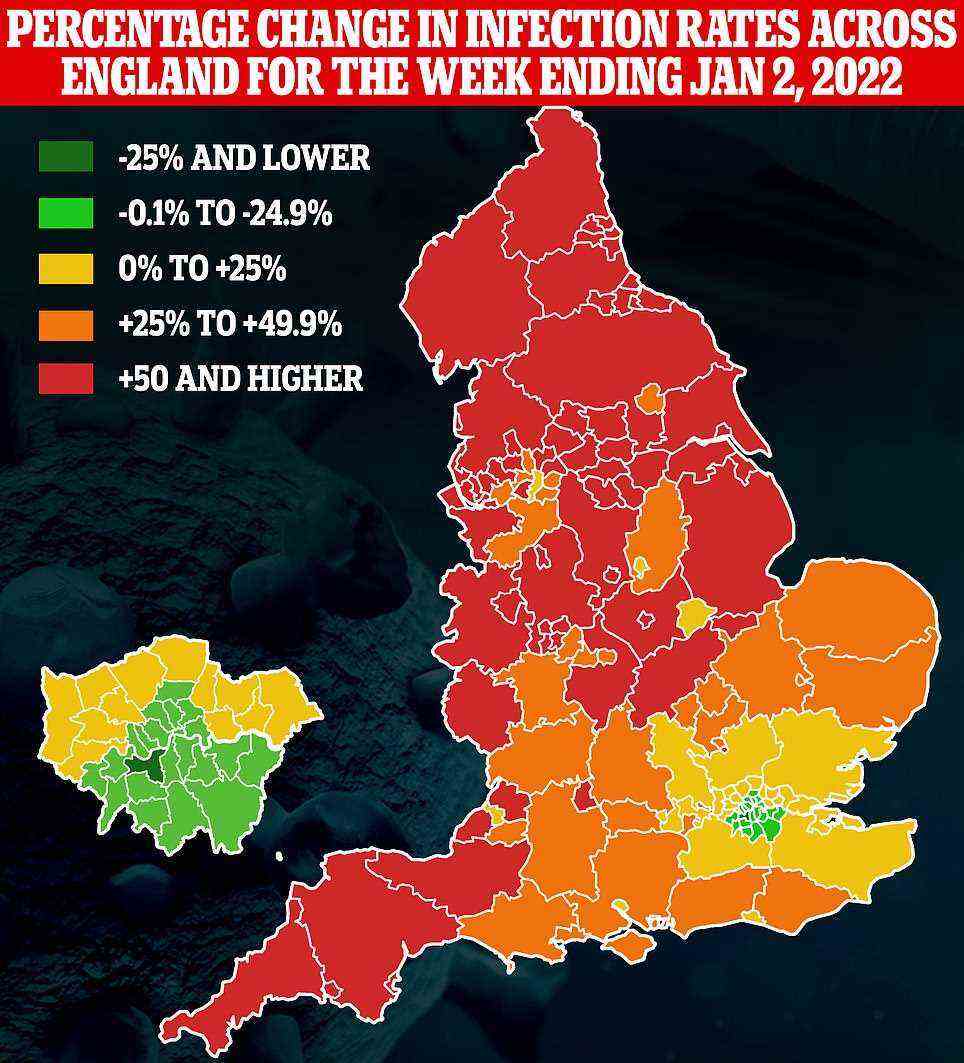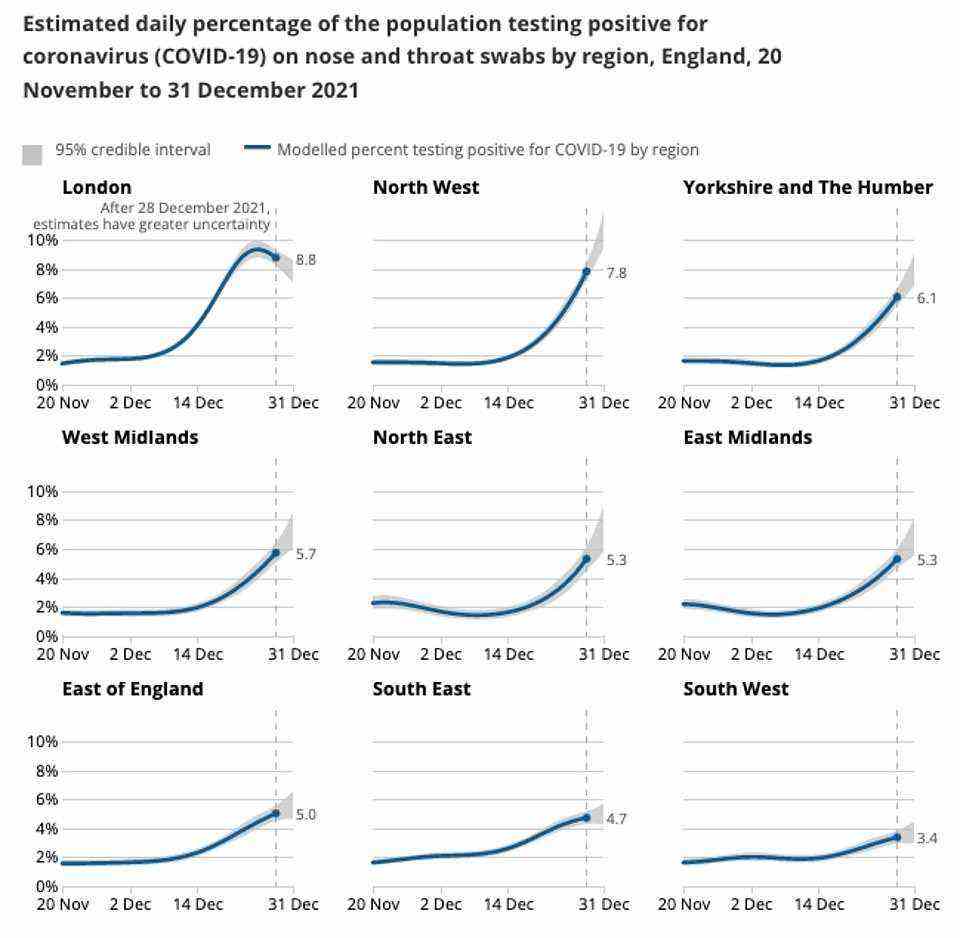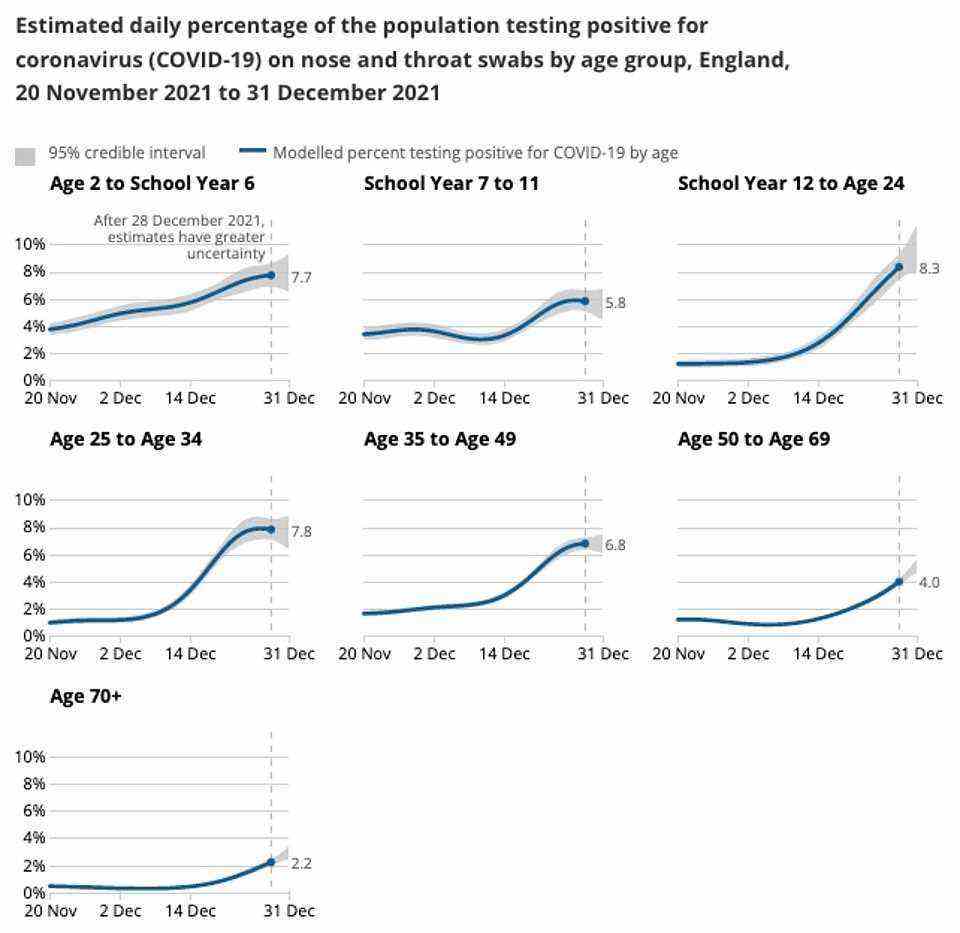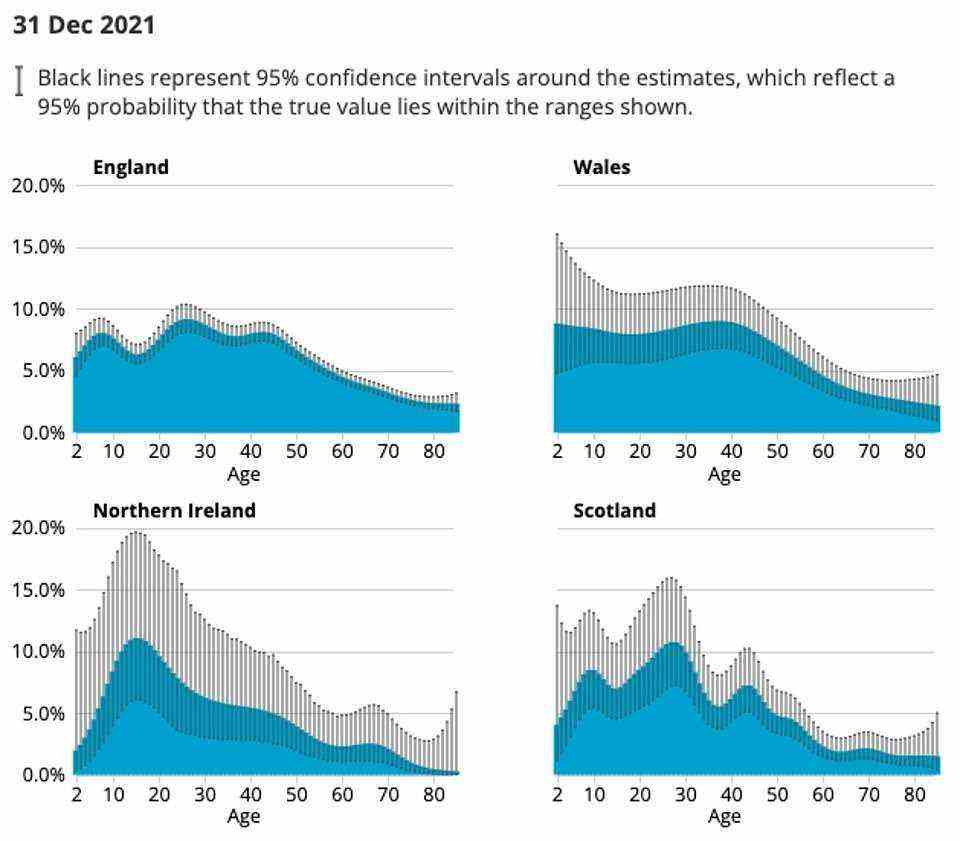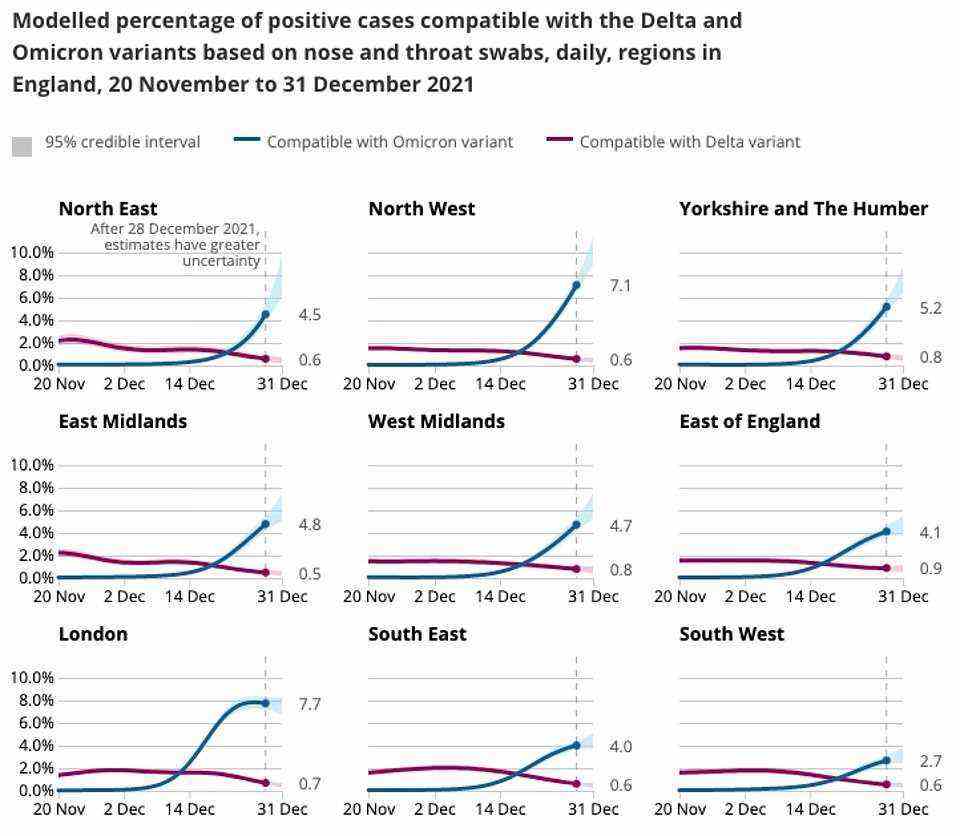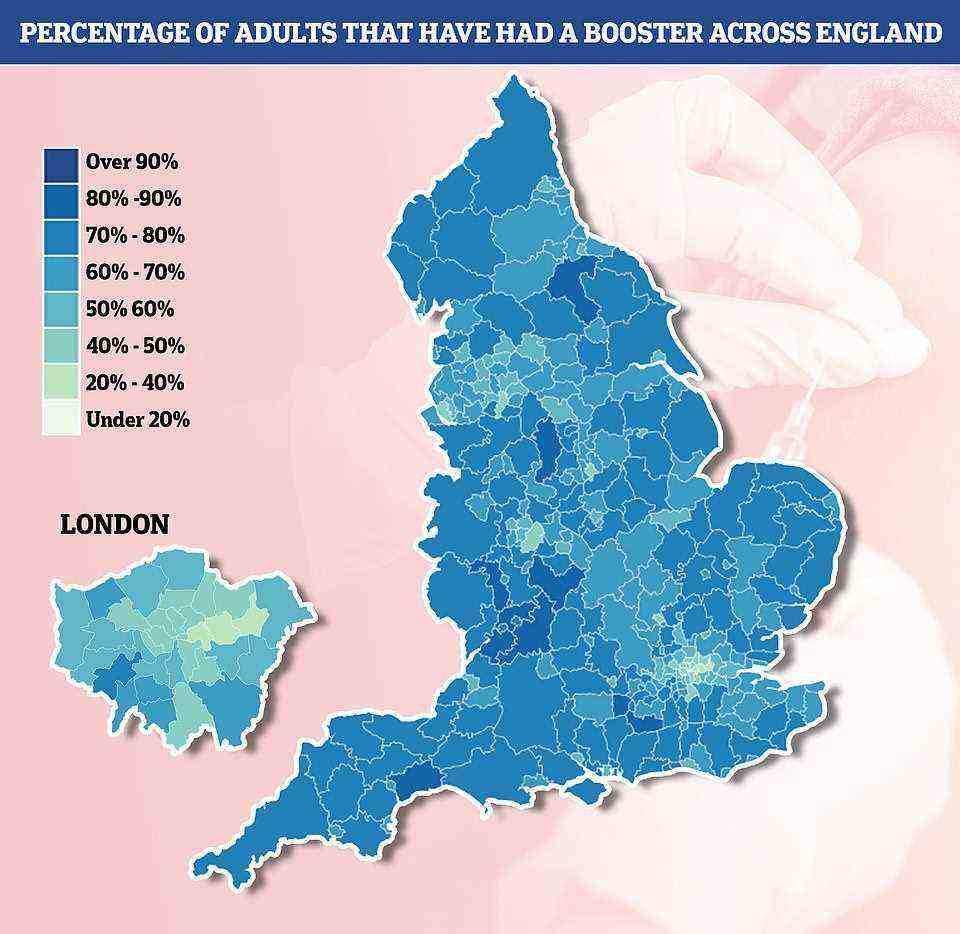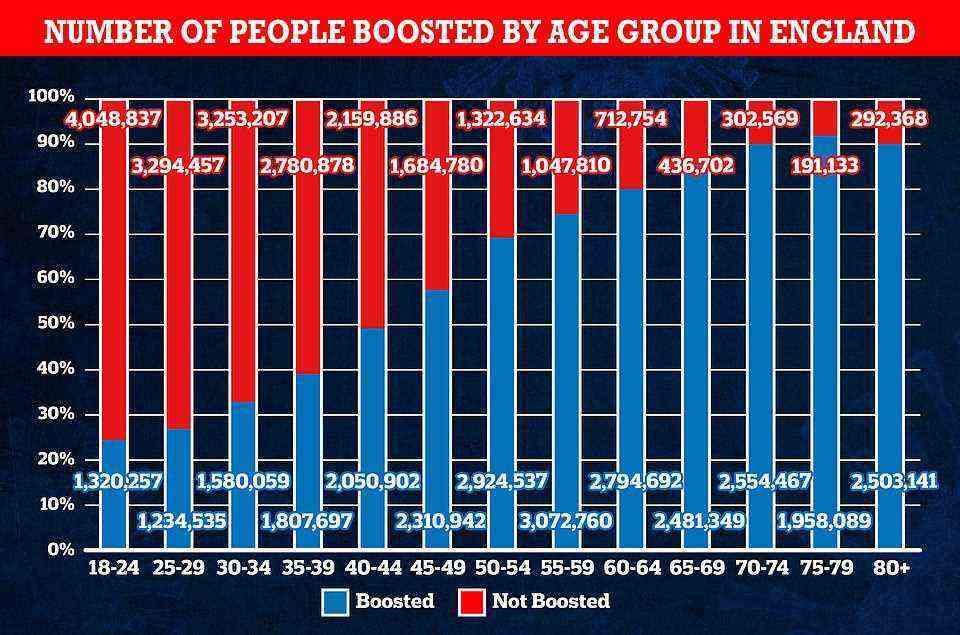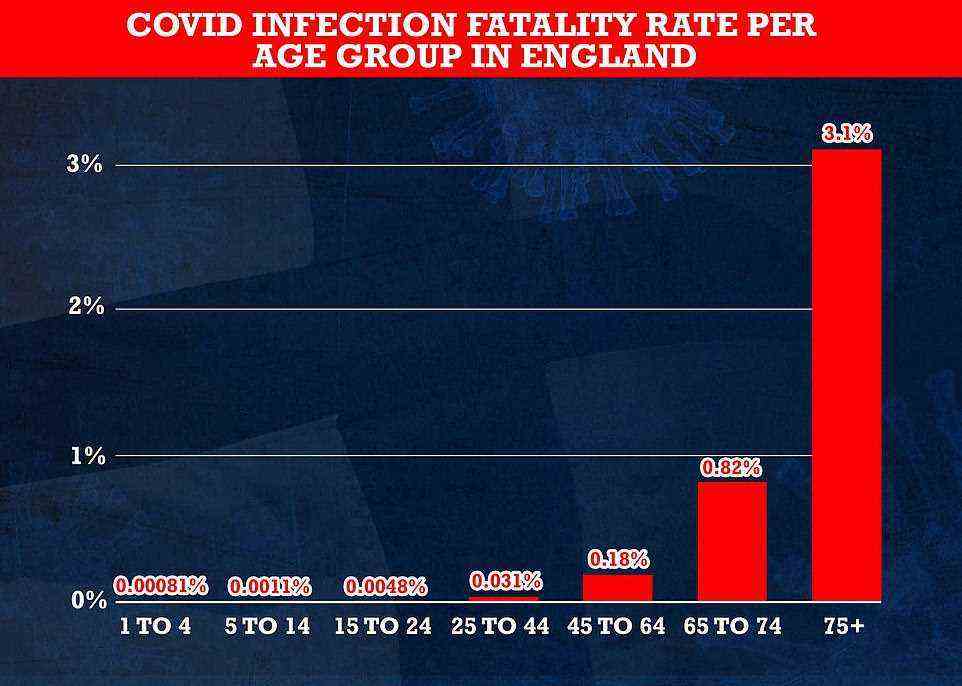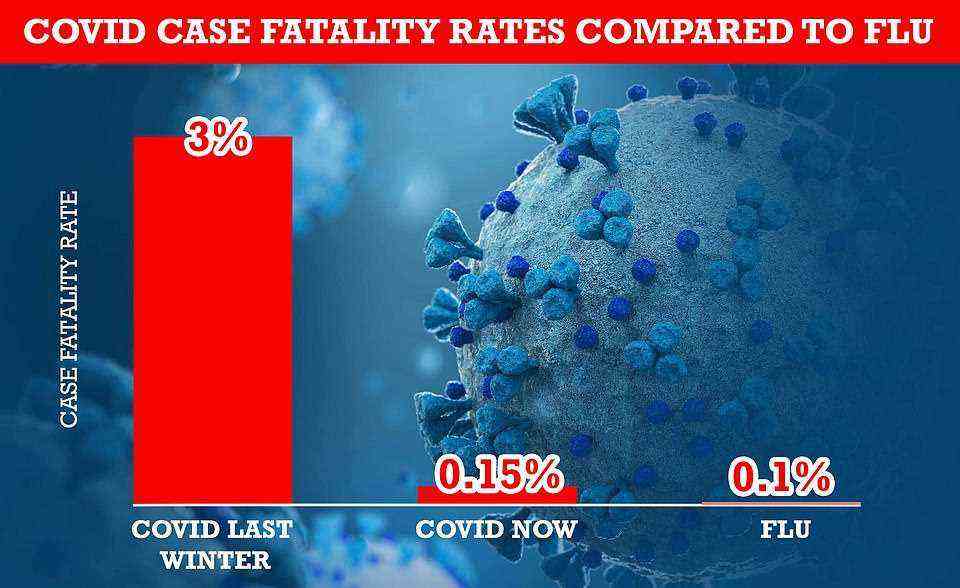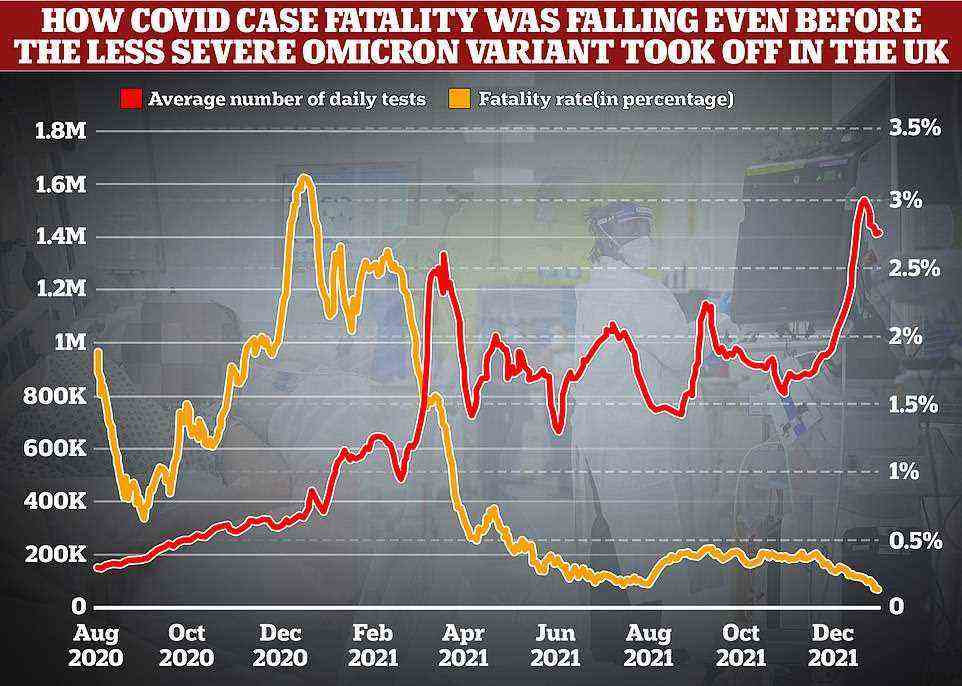A fourth Covid jab is not yet needed, according to British health officials, because booster jabs are continuing to provide high levels of protection against severe disease from the Omicron coronavirus variant among older adults.
Around three months after receiving a third jab, protection against hospitalisation among those aged 65 and over remained at about 90%, the UK Health Security Agency said.
Protection against mild symptomatic infection of the variant, however, is down to about 30% after three months, according to the latest data.
Figures also show the importance of the booster jab as, with just two vaccines doses, protection drops to 70% after three months and down to 50% after six months.
Taking this data into account, the Joint Committee on Vaccination and Immunisation has advised the Government against giving a second booster dose, or fourth jab, to care home residents and those aged over 80.
It added that priority should continue to be given to rolling out the first booster dose, and that unvaccinated people should come forward for their first two doses as soon as possible.
Professor Wei Shen Lim, the JCVI’s chair of COVID-19 immunisation, said the latest data is ‘highly encouraging and emphasises the value of a booster jab’.
She added: ‘The current data show the booster dose is continuing to provide high levels of protection against severe disease, even for the most vulnerable older age groups.
‘For this reason, the committee has concluded there is no immediate need to introduce a second booster dose, though this will continue to be reviewed.
‘The data is highly encouraging and emphasises the value of a booster jab.
‘With Omicron continuing to spread widely, I encourage everyone to come forward for their booster dose or, if unvaccinated, for their first two doses, to increase their protection against serious illness.’
The latest figures show more than 35 million boosters and third jabs have been administered in the UK.
The new data comes as Britain’s daily coronavirus cases fell for the second day in a row today and there are early signs NHS admissions are peaking in England — as Sajid Javid reiterated that Omicron is causing mild illness for the vast majority.
There were 178,250 new positive Covid tests across the UK over the past 24 hours, Government dashboard data shows, down 6 per cent on the figure last week — despite almost 2million tests being processed.
The two-day dip in new infections puts an end to nearly a month of solid growth following the emergence of the ultra-infectious new variant. There is now growing hope the UK’s outbreak will follow a similar trajectory to South Africa’s, where the Omicron crisis has completely collapsed in just six weeks.
Another 229 Covid fatalities were also registered across the UK today, marking a 13 per cent rise compared to last Friday.
However, deaths have remained relatively stable since the end of November, with experts confident the country is unlikely to see a surge despite an ‘unbelievable’ number of infections. There are around seven times fewer daily Covid fatalities now than during the second wave last January.
This could be explained in part by a raft of data suggesting Omicron could be no deadlier than the flu, which has prompted calls not to extend Covid restrictions any further in the country. But other experts say the coronavirus is much more transmissible than flu, meaning it will inevitably cause more deaths.
Meanwhile, latest hospital data showed another 2,434 patients were admitted to British hospitals with the virus on January 3, up by more than a quarter on the week before. But it is not clear how many of the new admissions were primarily for Covid, and analysis of NHS statistics shows nearly 40 per cent of ‘patients’ aren’t mainly being treated for the virus.
And even though hospitalisations are rising in the UK as a whole, they appear to be flatlining in England according to the most recent data. Daily admissions there were down 10 per cent in a week on January 5, the second day in a row they had fallen.
England’s admissions appear to be following the same trajectory as London’s, which is weeks ahead of the rest of the country and has seen hospital rates fall for the past five days.
The promising statistics came shortly after the Health Secretary reminded the nation that boosters cut the risk of severe Omicron illness by up to 90 per cent, as he issued a plea to the remaining 10million eligible Brits who have not yet taken up the offer of a third dose.
But Mr Javid cautioned the NHS still faces a ‘rocky’ few weeks as it wrestles with staff absences triggered by high infection rates.
Firefighters could be drafted in to help health services after a major incident was declared in Northamptonshire due to ‘worrying’ staff shortages. The Army has already been sent to the capital to plug major gaps in hospital and ambulance service rotas.
However, in another major boost, Sir David Spiegelhalter, an eminent statistician at the University of Cambridge, suggested the worst of the pandemic was over.
He said: ‘The big severing is between really severe outcomes and that there’s still no sign of a serious increase in intensive care, and ventilation, and in deaths. We would have expected to see that by now in London and elsewhere — so that is the really reassuring thing.
‘I think we can guarantee that over this wave, as we endure the next few weeks, what we’re not going to see is a big surge in very severe outcomes.’
NHS figures released today show there were 13,045 beds occupied by coronavirus sufferers on January 4, of which 4,845 were not mainly sick with the disease. It means only six in 10 inpatients are primarily ill with Covid now compared to more than 80 per cent with Delta
Experts say there is reason to believe that incidentals will continue to rise as the variant pushes England’s infection rates to record highs, with one in 15 people estimated to have had Covid on New Year’s Eve
The share of so-called ‘incidental’ cases was even bigger in Omicron hotspot London , where 45 per cent of ‘Covid patients’ were not primarily in hospital for the virus
Pictured above is the % change in infection rates in England over the week to December 26 (left), and January 2 (right)
Could Omicron be even LESS deadly than seasonal flu? Scientists believe ultra-infectious strain may kill 100 TIMES fewer people than Delta
Omicron could be even less deadly than flu, scientists believe in a boost to hopes that the worst of the pandemic is over.
Some experts have always maintained that the coronavirus would eventually morph into a seasonal cold-like virus as the world develops immunity through vaccines and natural infection. But the emergence of the highly-mutated Omicron variant appears to have sped the process up.
MailOnline analysis shows Covid killed one in 33 people who tested positive at the peak of the devastating second wave last January, compared to just one in 670 now. But experts believe the figure could be even lower because of Omicron.
The case fatality rate — the proportion of confirmed infections that end in death — for seasonal influenza is 0.1, the equivalent of one in 1,000.
Meanwhile, researchers at Washington University modelling the next stage of the pandemic expect Omicron to kill up to 99 per cent fewer people than Delta, in another hint it could be less deadly than flu.
No accurate infection-fatality rate (IFR), which is always just a fraction of the CFR because it reflects deaths among everyone who catches the virus, has yet been published for Delta.
But UK Government advisers estimated the overall figure stood at around 0.25 per cent before Omicron burst onto the scene, down from highs of around 1.5 per cent before the advent of life-saving vaccines.
If Omicron is 99 per cent less lethal than Delta, it suggests the current IFR could be as low as 0.0025 per cent, the equivalent of one in 40,000, although experts say this is unlikely.
Instead, the Washington modelling estimates the figure actually sits in the region of 0.07 per cent, meaning approximately one in 1,430 people who get infected will succumb to the illness.
Leading researchers estimate flu’s IFR to sit between 0.01 and 0.05 per cent but argue comparing rates for the two illnesses is complicated.
In other coronavirus developments:
- Nearly four in ten Covid patients in hospitals in England are not primarily being treated for the virus, according to official data that highlights the mildness of Omicron;
- Up to one in five people in London‘s worst-hit boroughs may have had Covid on New Year’s Eve, surveillance data showed today — although infections were slowing in the capital overall;
- Covid deaths rose for the first time since in over a month last week in England and Wales, according to official figures that show early signs of Omicron‘s impact on fatalities;
- Washington University researchers said Omicron kills 99 per cent fewer people than Delta, as experts said the new variant is more akin to the flu;
- Mark Drakeford launched an astonishing tirade at Boris Johnson over Covid restrictions today as he vowed to ignore clear evidence that the worst of the Omicron wave has passed in order to keep tough restrictions in place in Wales;
- Thousands of women may not have got their Covid vaccine because they fear it will interact with their Botox, experts say.
Sir David said in December the Government’s Scientific Advisory Group for Emergencies (Sage) warned that, if only Plan B measures were adhered to, hospital admissions would be likely to exceed 3,000 a day.
However, he said that, while daily cases are currently above 2,000, ‘with luck’ they may not go above 3,000, and the main change has been that people have ‘voluntarily been very cautious about their behaviour’.
Today’s daily figures show Britain is now averaging 180,076 cases per day, which is still more than twice as many as any other point in the pandemic before Omicron.
While admissions increased across the UK, figures for England show admissions have dropped 9.7 per cent in a week in the nation from 2,370 to 2,139 on January 5, the latest date data is available for.
The number of people in hospital with the virus is still increasing in the nation, increasing 30 per cent to 16,163 today.
But official NHS figures up to January 4 show just 62 per cent of those are patients being treated primarily for Covid.
And he share of so-called ‘incidental’ cases was even bigger in Omicron hotspot London, where 45 per cent of ‘Covid patients’ were not primarily in hospital for the virus.
MailOnline’s analysis shows the region with the highest incidental hospital patient was the Midlands, where 45 per cent of Covid patients were not being treated primarily for the virus on January 4.
It was followed by London (38 per cent), the East of England (38 per cent) and the North West (63 per cent).
The largest week-on-week growth in all Covid patients was in the North East and Yorkshire, which saw them rise 93 per cent from 1,014 to 1,961.
Of those, 1,265 (64 per cent) were being treated primarily for Covid — the third highest proportion in the country.
Professor Spiegelhalter told MailOnline that the rise in incidental cases ‘reflected the huge number of infections’ at the moment.
He added: ‘The rise in the share of incidental Covid patients could be largely due to the increased rate of people catching Covid while in hospital.
‘But we have good evidence from other sources that, compared to Delta, Omicron tends to produce milder disease — although it can still affect some people badly.’
In yet more proof the wave is receding in London, the city’s R rate dropped from between 1.2 and 1.6 on December 23 to 0.9 to 1.2 now according to the UK Health Security Agency’s (UKHSA) estimate today. The rate is above one in all other areas of the country
The above graph shows Covid infection rates across England’s regions up to January 2, Department of Health data shows
The above are the 25 areas with the highest Covid infection rates in England. In London, Havering has the biggest outbreak but nationally it is the 38th highest Covid infection rate
Nearly 40% of NHS Covid ‘patients’ in England are NOT being treated for virus
Nearly four in ten Covid patients in hospitals in England are not primarily being treated for the virus, according to official data that highlights the mildness of Omicron.
NHS figures released today show there were around 13,000 beds occupied by coronavirus sufferers on January 4, of which nearly 4,850 were not mainly sick with the disease. It means close to 40 per cent of patients included in the Government’s daily Covid statistics may have been admitted for something else, such as a broken leg.
The share of so-called ‘incidental’ cases was even bigger in Omicron hotspot London, where 45 per cent of ‘Covid patients’ were not primarily in hospital for the virus.
Experts say there is reason to believe that incidentals will continue to rise as the variant pushes England’s infection rates to record highs, with one in 15 people estimated to have had Covid on New Year’s Eve.
In South Africa — ground zero of the Omicron outbreak — up to 60 per cent of Covid patients were not admitted primarily for the virus at the height of the crisis there.
There are growing calls among experts and politicians for the Government to differentiate between people who’re admitted ‘with’ and ‘from’ Covid to assess the real pressure of the virus on the NHS.
The rise in incidental admissions and lack of any real uptick in ICU cases has given Boris Johnson the confidence to ‘ride out’ the Omicron wave without any further restrictions.
A host of studies suggest Omicron causes less severe illness than its predecessors because it replicates faster in the upper airways rather than in the lungs where it can do more damage. MailOnline analysis revealed the Covid case fatality rate — the proportion of confirmed infections resulting in death — is now 21 times lower than during the devastating second wave.
Meanwhile, on a visit to King’s College Hospital London, Health Secretary Sajid Javid said he wanted to thank NHS workers across the country for ‘the amazing work they’ve been doing throughout this pandemic but particularly during these current challenging times’.
But Mr Javid also warned hospital admissions were rising and that the NHS was facing a ‘rocky few weeks ahead’.
He said: ‘We are in a stronger position than we were last year thanks to the vaccinations and the testing, we have boosted more people in this country than in any other country in Europe, we’ve got more antivirals per head than any other country in Europe, we’re testing more people per head than any other country in Europe.’
He added: ‘The best thing anyone can do if they haven’t already is get boosted or get your first or second jab if you haven’t had one.’
During the visit he said the intensive care unit for Covid patients had an estimated 70 per cent of patients unvaccinated and that this was a ‘reminder to us all’ of the importance of vaccination.
During the visit he said the intensive care unit for Covid patients had an estimated 70 per cent of patients unvaccinated and that this was a ‘reminder to us all’ of the importance of vaccination.
Speaking at the same visit, the head of the health service said a fortnight of further hospital admissions for Covid are ‘already baked in’ as some NHS staff face ‘the steepest climb of the pandemic yet’.
Amanda Pritchard, chief executive of NHS England, thanked staff during a visit to King’s College Hospital in London on Friday.
More than 400 people are currently in the hospital with Covid.
She said: ‘We’re a week into 2022 but I do know that for some colleagues it already feels like it’s been a long year.
‘Case rates of the new variant have been highest so far here in London, but there is no community, no part of the country, that has been untouched by Omicron and this has obviously had, and will continue to have, an impact on NHS staff and on the services that we’re able to provide.
‘Realistically, another fortnight of admissions from Omicron are baked in. The only unknown is what level we will see and, of course, we will hope that the more optimistic forecasts are going to be the right ones.’
She said that whatever the next few weeks bring, there is ‘no doubt’ that it would have been so much tougher if it had not been for NHS staff working to give vaccinations over the last year.
She added: ‘Staff are stepping up, but they’re not machines.
‘As ever in the NHS we’re working on this together, colleagues are finding though that the significant challenges that they’re facing now for some make this the steepest climb of the pandemic yet and the latest stats show that every day around 10,000 more colleagues are off sick than they were last week.
‘I know leaders across the NHS are doing everything they can to support their teams.’
Despite the huge wave of cases caused by the Omicron variant in London, early sign suggest infections are falling, with around 7.8 per cent of people thought to have the virus on December 31 — down from 9.3 per cent the previous week. Graphs show: The average infection rate over the week in regions across England
The percentage of people testing positive for Covid continued to increase across all age groups in the week, the ONS said
Infections were highest in young people aged from school year 12 to 24 years old (8.34 per cent) and those aged 25 to 34 (7.83 per cent) and primary school children (7.72 per cent)
The Omicron variant is dominant all regions in England, infecting 7.7 per cent of all Londoners and 7.1 per cent of people in the North West during the week
The above map shows vaccine uptake across England’s 300-plus local areas, with darker colours indicating a higher proportion of the population that has got a booster. Uptake is lowest in London
Mark Drakeford launches astonishing attack on Johnson over Covid as he vows to KEEP draconian Welsh restrictions
Mark Drakeford launched an astonishing tirade at Boris Johnson over Covid restrictions today as he vowed to ignore clear evidence that the worst of the Omicron wave has passed in order to keep tough restrictions in place in Wales.
The First Minister branded England an international ‘outlier’ in resisting tighter curbs and accused the PM of overseeing a ‘politically paralysed’ administration that had tied his hands.
It came as he used a press conference to insist that Wales’ tough Covid restrictions on bars and mass events must stay in place due to an Omicron ‘storm’ breaking over the nation.
As the rest of the UK eases restrictions he warned of ‘a difficult month ahead’, despite admitting that the variant may not be as severe as previous waves.
But then, in a rant at Mr Johnson, he added: ‘In England, we have a Government that is politically paralysed, with a Prime Minister who is unable to secure an agreement through his Cabinet to take the actions that his advisers have been telling him ought to have been taken.
‘And even if he could get his Cabinet to address them, he can’t get his MPs to agree them.
‘The outlier here is not Wales. Wales is taking action, as is Scotland, as is Northern Ireland, and as are countries right across Europe, and right across the globe.
‘The one country that stands out as not taking action to protect its population is England.’
She said the NHS was ‘still here’ for the public if they needed treatment and people should continue to come forward for care, adding that people should get their vaccines ‘to keep the country on the path out of this pandemic.’
It comes after official data today showed none of England’s 25 boroughs worst hit by Covid are currently in London, adding to a growing body of evidence that the capital’s outbreak has already peaked.
Experts say it suggests that the ultra-transmissible variant will soon begin to fizzle out in the other regions of the country, mirroring the trend witnessed in South Africa — the first country to fall victim to the strain, where cases are now in freefall.
Barrow-in-Furness in Cumbria is now England’s Omicron hotspot, with more than 3 per cent of its 67,000 residents testing positive last week at a rate of 3,342 cases per 100,000 people.
But the capital’s most infected borough, Havering, now sits at 38th in the national league table, with an infection rate of 2,212.9 — the equivalent of 2.1 per cent of people living there testing positive in the week ending January 2.
Despite signs suggesting London’s outbreak is already slowing down, up to one in five people were thought to be infected with the virus on New Year’s Eve.
Some experts have warned the dip may be down to fewer tests being carried out now, but even hospital admissions have begun falling in the capital, bolstering hopes that the decline is genuine.
Even the number of NHS staff off stick with the virus appears to have peaked after hitting highs of nearly 6,000 a day, sparking hopes that pressure will soon start to ease on strained hospitals.
The workforce crisis, partly fuelled by self-isolation rules, saw some health chiefs tell heart attack victims to make their own way to hospital and led to non-urgent operations being cancelled.
The Army has already been deployed to help plug rota gaps in the capital, and it was today revealed that up to 150 troops will be sent to the North West Ambulance Trust to help ease pressures.
The above shows booster vaccine uptake by each age group’s population. It reveals that uptake has been highest among older age groups who are most at risk to the virus. Britons can only get a booster from three months after their second jab
Firefighters to help care works as major incident declare in Northamptonshire
A system-wide major incident has been declared in Northamptonshire as ‘worrying’ staff shortages mean firefighters could be drafted in to help health and social care workers.
During a media briefing on Friday, chief fire officer for the county, Darren Dovey, described it as a ‘positive’ move that meant staff across all sectors could be flexible.
However, Mr Dovey said he expected the situation to deteriorate before it gets better.
He told reporters: ‘We are very, very hopeful this will be relatively short term when compared to the original wave of Covid.
‘But we do think… that this is likely to deteriorate over the next few weeks before it gets better.
‘So it’s about making sure that we are really doing what the public expects us to do as they are paying all of our wages.’
Detailing why a major incident had been declared, Mr Dovey said: ‘Most of that pressure is being felt in the health and social care arena… but as we are seeing across the country, staff absence rates are very, very high, admissions are increasing into hospital and social care absences and the pressure in that system is creating full system pressure.
‘In order just to coordinate our activity and assist each other where we can, we felt the best way to do that was to declare a major incident and put the structures in place to be able to deal with it.’
Addressing how staff could now be flexible after the major incident declaration, Mr Dovey said: ‘What this is all about is all public agencies, rather than working in their own silos, are effectively coming together.
‘So for example, firefighters driving ambulances, we’ve been doing that since early 2020, we’re continuing to do that but we think that may ramp up over the next couple of weeks.
‘The major incident gives us a framework in order for that request to be able to be made and to proactively plan for that over the next couple of weeks.
‘We’ve been asked potentially if the firefighters could help with transporting people to vaccination centres who may not be able to get there but may be vulnerable and need their booster.
‘So obviously while we’ve not got people doing community-based activity, we can redivert them to do that kind of thing.’
Business minister Paul Scully today heralded ‘encouraging’ signs the capital’s outbreak was peaking but warned it was still necessary to be ‘on guard’ because of severe pressures on the NHS.
A raft of separate data has suggested the worst is over in London, including the Office for National Statistics’ gold-standard weekly surveillance report.
It showed prevalence reached a high of 816,200 people being infected on Christmas Day but this dropped to around 680,200 on New Year’s Eve, the equivalent of around one in 15 people being infected.
But the major surveillance study, which sends out tens of thousands of random tests each week, also warned that rates could be as high as one in five in Tower Hamlets.
Nationally, Barrow-in-Furness currently has the biggest outbreak followed by neighbouring Copeland, at 3,321.5, and St Helens in Liverpool at 2,835.5.
On the other end of the scale came the Isle of Wight at 891.1 cases per 100,000, with it confirming approximately four times fewer cases than Barrow-in-Furness. It was followed by West Devon (908.5) and Rother (957.4).
But the raw infection rates have eclipsed rates seen in previous waves, which nationally did not get above 600 cases per 100,000 last year before stringent curbs were imposed.
In London the borough with the smallest outbreak — Camden — had an infection rate of 1,195.6 cases.
Of England’s 25 areas with the biggest outbreaks, 18 were in the North West, illustrating how the wave has shifted to a separate region of the country.
Department of Health figures show the North West has the highest infection rate, at 2,332.4 cases per 100,000 people. London came fourth (1,775.4) after the North East (1,970.6) and Yorkshire and the Humber (1,869.8).
In even more encouraging news the capital recorded 3,989 Covid patients on its wards on January 5, the latest available, which was barely a change from 4,053 the day before.
The week before they were rising by about 15 per cent day-on-day, and this was also just over half the peak from last winter when 7,700 Covid patients were in London’s hospitals.
And the number of patients on mechanical ventilators has barely risen throughout the wave, the same statistics show. There are currently 224 patients on these in London’s hospitals.
Senior NHS leaders say there are early signs pressure on hospitals in the capital may now be easing, although there are warnings about rising cases among over-60s.
Mr Scully told LBC: ‘I think [the situation in London] is looking encouraging, the trend at the moment, but clearly we need to be on our guard because there is still pressure on the NHS in London.
‘It is not just about the case numbers — there is a clear disconnect between case numbers and hospitalisations — but you’ve also then, because of the increased testing and the increased awareness by people, you’ve got bigger absences as well, and that’s obviously putting extra pressure on the NHS and other public services.’
King’s College London scientists today suggested that cases in the capital also appeared to be peaking. They said they had dropped by a third within a week, raising hopes that the worst of the outbreak may be over. The figures rely on weekly reports from three quarters of a million people nationally to estimate the prevalence of the virus
Could Omicron be even LESS deadly than seasonal flu? Scientists believe ultra-infectious strain may kill 100 TIMES fewer people than Delta (and mortality rates were ALREADY similar to influenza before the variant emerged)
Omicron could be even less deadly than flu, scientists believe in a boost to hopes that the worst of the pandemic is over.
Some experts have always maintained that the coronavirus would eventually morph into a seasonal cold-like virus as the world develops immunity through vaccines and natural infection. But the emergence of the highly-mutated Omicron variant appears to have sped the process up.
MailOnline analysis shows Covid killed one in 33 people who tested positive at the peak of the devastating second wave last January, compared to just one in 670 now. But experts believe the figure could be even lower because of Omicron.
The case fatality rate — the proportion of confirmed infections that end in death — for seasonal influenza is 0.1, the equivalent of one in 1,000.
Meanwhile, researchers at Washington University modelling the next stage of the pandemic expect Omicron to kill up to 99 per cent fewer people than Delta, in another hint it could be less deadly than flu.
No accurate infection-fatality rate (IFR), which is always just a fraction of the CFR because it reflects deaths among everyone who catches the virus, has yet been published for Delta.
But UK Government advisers estimated the overall figure stood at around 0.25 per cent before Omicron burst onto the scene, down from highs of around 1.5 per cent before the advent of life-saving vaccines.
If Omicron is 99 per cent less lethal than Delta, it suggests the current IFR could be as low as 0.0025 per cent, the equivalent of one in 40,000, although experts say this is unlikely. Instead, the Washington modelling estimates the figure actually sits in the region of 0.07 per cent, meaning approximately one in 1,430 people who get infected will succumb to the illness.
Leading researchers estimate flu’s IFR to sit between 0.01 and 0.05 per cent but argue comparing rates for the two illnesses is complicated.
Cambridge University researchers, who are No10 scientific advisors, estimate that less than one per cent of under-75s who catch Covid die from the virus, with the fatality rate dropping for younger age groups. Over-75s are at most risk from the virus, with three per cent of those infected estimated to die from the virus
MailOnline analysis shows the UK’s case fatality rate — the proportion of confirmed infections that end in death — has shrunk 21-fold from three per cent during the darkest days of the second wave last winter before the vaccine rollout to 0.15 per cent at the end of December. For comparison, widely-circulated data suggests seasonal influenza has a case-fatality rate of around 0.1 per cent
The Oxford University team behind Our World in Data estimates that the UK’s IFR rate is currently 0.1 per cent. At the peak of the wave last winter, they estimated three per cent of those who caught Covid died from the virus. The declining IFR will be impacted by the increase in testing capacity this year, as comparatively more cases are now being detected
Gideon Meyerowitz-Katz, an epidemiologist at the University of Wollongong in Australia, told MailOnline his ‘very rough best guess’ was that triple-jabbed people were at the same risk from Omicron as they are from the flu. ‘Add the new medications into the mix and it gets even more complex,’ he added.
But scientists today leaped on the estimates, saying it was more proof that the worst days of the pandemic were over and that Britain needs to get back on the path to normality.
Professor Robert Dingwall, a former JCVI member of and expert in sociology at Nottingham Trent University, told MailOnline it will be a few weeks until there are definitive Omicron fatality rates, but if they are consistent with the findings that it is less severe ‘we should be asking whether we are justified in having any measures we would not bring for a bad flu season’.
What do we know about Omicron?
Scientists know Omicron is more infectious than previous strains of Covid due to the speed it has taken off around the world.
The variant has also been linked with causing more reinfections that previous strains, which experts say is likely due to its extensive mutations.
The UK Health Security Agency (UKHSA) analysis of nearly 800 Omicron infectious found six per cent were reinfections, suggesting it is 5.5 times more likely to reinfect than Delta.
And some experts say the period of the new variant – the time taken from infection to first symptoms – appears to be much shorter than other strains.
However, experts in South Africa, where the strian first emerged, and in the UK have said the variant is milder than previous versions of the virus.
Scientists in the UK said those infected with Omicron are 70 per cent less likely to be hospitalised, but experts in South Africa said the figure may be as high as 80 per cent.
However, it is unclear whether this is because the strain is inherently less severe or if protection from vaccines and prior infection mean people who catch Omicron are becomming less unwell.
Analysis by the UKHSA revealed immunity gained from third Covid jabs fades quicker against Omicron than Delta.
Adults who received two AstraZeneca doses, plus a Pfizer or Moderna booster, are 60 per cent less likely to get symptoms than the unvaccinated if they catch Omicron up to four weeks after their third jab. But after ten weeks, efficacy drops to 35 per cent for Pfizer and 45 per cent for Moderna.
Meanwhile, those who received Pfizer for all three of their doses saw their protection levels increase to around 70 per cent for two weeks after their top-up dose before falling to around 45 per cent 10 weeks later.
People given two AstraZeneca vaccines and a Moderna booster were the most protected, according to the report, with efficacy sitting at 75 per cent against Omicron and lasting for at least nine weeks.
He said: ‘If we would not have brought in the measures in November 2019, why are we doing it not? What’s the specific justification for doing it?
‘If the severity of Covid infection is falling away to the point that it is comparable with flu then we really shouldn’t have exceptional levels of intervention.’
There would be no justification in having ‘any restriction we didn’t previously have’ if the modelling is confirmed in the coming weeks, Professor Dingwall said.
However, he noted that if the UK has two respiratory viruses in the population which are capable of producing significant levels of hospitalisation, the NHS may need more funding to deal with both Covid and flu to increase its capacity.
Washington University experts who made the claim that Omicron will cause 97 to 99 per cent fewer deaths than Delta — based on case and death data — admit their forecasts were more ‘optimistic’ than forecasts used by UK Government scientists.
The Prime Minister was warned that daily Covid deaths in Britain could breach 6,000 a day this winter under the worst-case scenario of Omicron’s rapid spread.
But the doomsday projection, conducted by one of the modelling sub-groups who feed into No10’s SAGE panel, was branded ‘fictitious’.
Daily coronavirus fatalities maxed out at slightly less than 1,400 during the depths of the second wave, before ministers embarked on a huge vaccination blitz.
And studies show two doses of the current crop of jabs still drastically cut the risk of patients becoming severely ill if they catch the virus, even if they offer little protection against falling ill in the first place.
Booster vaccines — already dished out to 34million people across the UK, or 60.1 per cent of over-12s — bolster immunity even further, real-world evidence shows.
Independent academics have queried the University of Washington team’s estimate, saying that they do not look plausible and there is still lots of uncertainty around Omicron data.
The researchers did not offer an actual estimate for the IFR of Omicron — which scientists still barely understand given that it was only detected for the first time in mid-November.
The team said: ‘Based on the available data, we expect the infection-fatality rate will be 97-99 per cent lower than for Delta.
‘Huge numbers of infections and moderate numbers of hospitalizations may still translate into a peak of reported (global) daily deaths over 9,000 in early February.’
The IHME team also didn’t offer an estimated IFR for Delta, which first cropped up in India before hitting the UK towards the end of spring.
Studies showed it was twice as deadly as the original virus, which was thought to have an IFR of around 1.4 per cent. But even using that figure would equate to an IFR of around 0.03 per cent if Omicron really was 97 to 99 per cent less lethal, making it similar to flu.
Their own estimates for Omicron — as almost every case will be caused by the strain by January — correspond to an IFR of around 0.07 per cent, Professor McConway said. This is based on deaths peaking at around 330 per day in Britain.
MailOnline analysis shows just 0.15 per cent of cases led to a death towards the end of December, compared to highs of over three per cent during the darkest days of last year’s second wave when the Alpha variant was in full motion and the NHS had yet to embark on its vaccination drive. The rate is calculated by comparing average death numbers to average case numbers from two weeks earlier, which is roughly the amount of time it takes for the disease to take hold, experts say
Official data shows the number of people dying has barely changed across the UK over the last month, with fatalities dropping in the week up to December 31. Graph shows: Covid deaths by death date in the UK. More up to date death data by date reported is biased by reporting issues over the bank holiday weekends
If Delta caused 97 to 99 per cent more deaths than this 0.07 IFR for Omicron, it would have an IFR of up to seven per cent, however, highlighting just how difficult it is too nail down an estimate.
Professor Kevin McConway, a statistician at the Open University, told MailOnline the suggested IFR of as low as 0.0025 per cent was ‘really, really tiny’. That estimate is based on the rolling IFR, estimated by Cambridge University academics, which has been skewed downwards because of the build-up of natural immunity.
The Washington University experts acknowledge there is uncertainty in their projections, Professor McConway noted as he said it was possible they have ‘got their numbers wrong somewhere’. But he said the actual projection — of up to 330 deaths per day — was plausible.
IHME told MailOnline they calculated IFR based on Covid seroprevalence data by age and Covid death figures.
Real-time IFR can vary drastically in every nation based on previous immunity, prevalence of obesity and other medical conditions, and the population age structure.
Experts also say it is hard to track overall IFR because it is impossible to accurately tell exactly how many people have been infected because not everyone gets tested when they are ill.
But they believe the Covid IFR is dropping due to medical interventions.
Dr Simon Clarke, a microbiologist at Reading University, said that he believes the future of Covid can be ‘kept in check’ with jabs, insisting there was ‘no question’ that vaccines have drastically changed the course of the pandemic.
He added: ‘The immunity we are building up appears to be suppressing new variants from causing severe disease.’
But he warned it was not ‘inevitable’ that the virus will eventually morph into one that merely causes symptoms of the common cold.
MailOnline’s analysis suggests the Covid fatality rate fell to as low as 0.14 per cent on December 28 — its lowest ever total — after dropping every day since November 18.
The rate is calculated by comparing average death numbers to average case numbers from two weeks earlier, which is roughly the amount of time it takes for the disease to take hold, experts say.
It means the case-fatality rate was already dropping before the strain truly kicked off in Britain in mid December, showing vaccines have played a huge role in thwarting the virus.
But the figure is also skewed slightly by increased levels of testing, with the number of swabs being carried out every having shot by around 245 per cent over the past year.
Testing in Britain reached its highest ever level in the week leading up to Christmas this year, before peaking on January 4 at more than 2million.
And data shows cases were predominantly occurring in people aged under-50, who have always been less at risk of dying from the virus. Rates are now only going up in over-60s in London, signalling what may be to come fore the res of the country.
Professor Paul Hunter, an infectious disease expert at the University of East Anglia, told MailOnline the Covid fatality rate has been falling in recent weeks in the UK but some of this ‘is probably down to delayed reporting of deaths over Christmas’.
He said the ‘fatality rate for Omicron does seem to be lower than we have seen with previous variants and is probably now below 0.2 per cent’.



